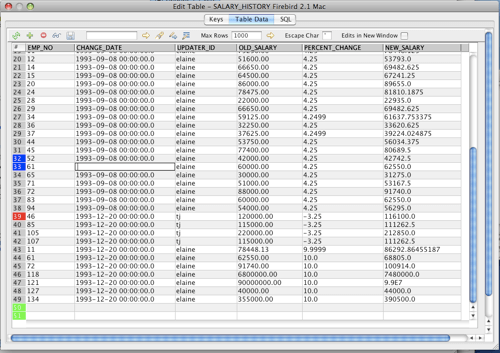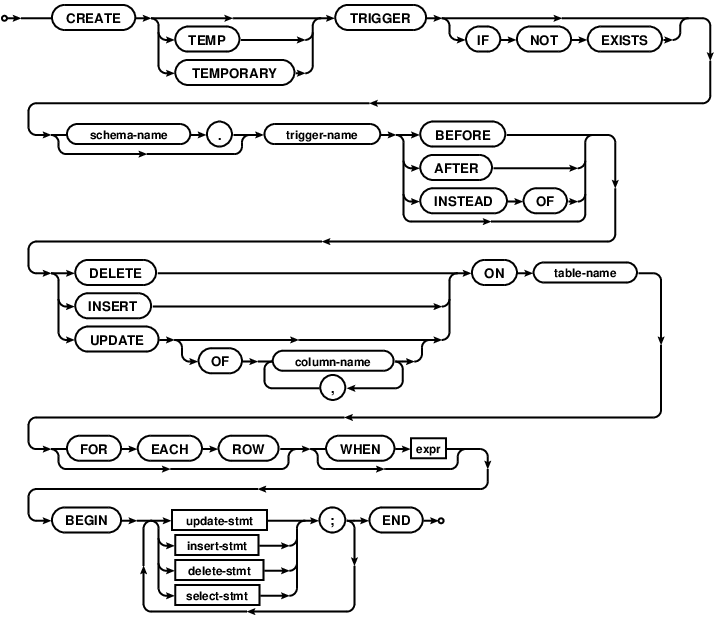DB Browser for SQLite is a high quality, visual, open source tool to create, design, and edit database files compatible with SQLite. It is for users and developers wanting to create databases, search, and edit data. Base is an application for creating, designing, editing and browsing SQLite 3 database files. It's a proper Mac OS X application. Fast to launch, quick to get in to and get the data you need.
I am trying to look for a good tutorial/jump point to use SQLite in MacOSX App. I do have knowledge in iPhone development but never dealt with SQLite before, all my apps were enterprise lever where i talk to RESTFul server to post and get data, and all the sql stuff is at server side.
All my search attempts returned iphone results and some UI wrappers OSX, i guess there are less people out there that code for OSX than iphone :)
I am trying simply to make my app:
When it runs for the first time, checks and create a DB if it does not exist. I prefer to make the code invoke a sql script that will create the db if it does not exist, or if does exist it can check and make sure all tables, FK relations .etc are correct. (I know how to do that script I just need the how to invoke in cocoa OSX apps)
Basic SQL stuff. INSERT/UPDATES/DELETE?
Sqlite Viewer Mac
But before all this, is SQLite3 the correct approach for MAC OSX apps or I should stay with using plist files? Can the user 'Normal' mess the state of SQLite3? are there any permissions issues that i have to worry about? I want my users just to launch the app and I will do everything in the background for them (I know I will support 10.8+ for this)?
2 Answers
Depending on your data needs you might consider using Core Data. It's not right for every situation, but it might be a good thing to check out. It can store data in XML, sqlite formats on the backend, so you can pick the right format depending on the data characteristics of your app.
Click-to-Run Office users who get the update may notice that they are now at version 14.0.4541.1000. The Click-to-Run update system is designed to run quietly in the background and rarely requires user interaction. Microsoft office for mac 2011 equation editor. New Click-to-Run Office 2010 downloads will now start with the updated version, instead of the older version 14.0.4536.1000.
If you know you want SQLite directly, FMDB is a good wrapper around it. I used FMDB a few years ago in a Mac app for a client and it worked pretty well.
Photo Editor For Mac
Even if FMDB isn't your style reading the source may give you a good example of how the sqlite API works.
RyanWilcoxRyanWilcoxIf you are an iOS developer then you are aware of Core Data, which is probably a better choice than raw SQLite for Mac Applications.
AbizernAbizernNot the answer you're looking for? Browse other questions tagged macoscocoasqlite or ask your own question.
Summary: in this tutorial, you will learn how to create a new SQLite database from a Python program.
When you connect to an SQLite database file that does not exist, SQLite automatically creates a new database for you.
To create a database, first, you have to create a Connection object that represents the database using the connect() function of the sqlite3 module.
For example, the following Python program creates a new database file pythonsqlite.db in the c:sqlitedb folder.
2 4 6 8 10 12 14 16 18 | fromsqlite3importError '' create a database connection to a SQLite database '' try: print(sqlite3.version) print(e) ifconn: if__name__'__main__': create_connection(r'C:sqlitedbpythonsqlite.db') |
In this code:
First, we define a function called create_connection() that connects to an SQLite database specified by the database file db_file. Inside the function, we call the connect() function of the sqlite3 module.
The connect() function opens a connection to an SQLite database. It returns a Connection object that represents the database. By using the Connection object, you can perform various database operations.
In case an error occurs, we catch it within the try except block and display the error message. If everything is fine, we display the SQLite database version.
It is a good programming practice that you should always close the database connection when you complete with it.
Things You Need to Know about Free PDF Editor for Mac Although we have listed the best free PDF editors for Mac, they may fall short of PDF users' expectation in one way or another. Free PDF editor for Mac is able to finish the basic work and costs free, but it has some nonnegligible drawbacks. Best pdf viewer for mac.
Fast composition workflow. Free audio editor download. SSL-style mix compression and EQ. Awesome sound set serves as instant inspiration for new electronic tracks. Pros: Versatile array of bundled instruments.
Second, we pass the path of the database file to the create_connection() function to create the database. Note that the prefix r in the r'C:sqlitedbpythonsqlite.db' instructs Python that we are passing a raw string.
Let’s run the program and check the c:sqlitedb folder.

If you skip the folder path c:sqlitedb, the program will create the database file in the current working directory (CWD).
Html Editor For Mac
If you pass the file name as :memory: to the connect() function of the sqlite3 module, it will create a new database that resides in the memory (RAM) instead of a database file on disk.
Sqlite Client Mac
The following program creates an SQLite database in the memory.

2 4 6 8 10 12 14 16 18 20 | fromsqlite3importError '' create a database connection to a database that resides '' try: print(sqlite3.version) print(e) ifconn: if__name__'__main__': |
In this tutorial, you have learned how to create a SQLite database on disk and in memory from a Python program using sqlite3 module.
- Was this tutorial helpful ?
Comments are closed.